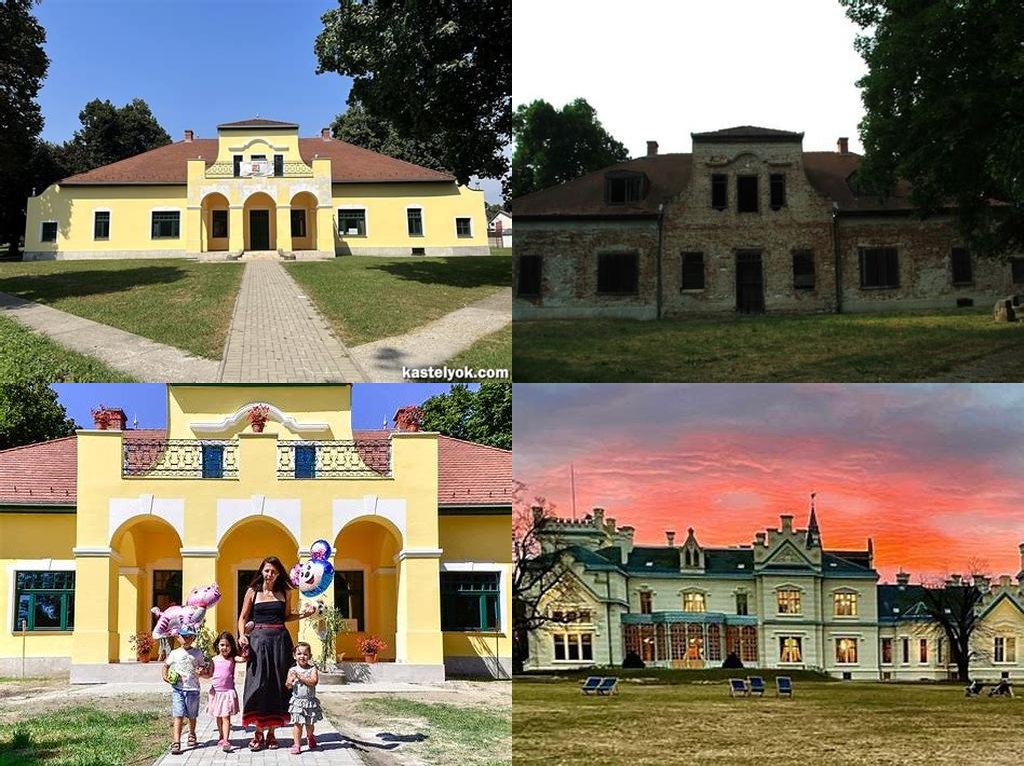
Szentiványi-kastély in the quiet village of Tolmács is not just another stately home lost in the Hungarian countryside. It stands as a wonderful testament to shifting times, family stories, and architectural trends—one that feels both noble and unexpectedly approachable. If you’re the sort of traveler who enjoys peeling back layers of history with your own hands—or simply someone who appreciates the atmosphere of places where time seems to pause—then this mansion deserves a spot on your adventure list.
Rising gently at the edge of the Nógrád hills, the Szentiványi-kastély instantly draws you in with a fusion of elegant lines and lived-in tradition. The mansion owes its name and early glory to the Szentiványi family, one of the region’s more fascinating landed gentry. Though the property’s story stretches back as early as the 18th century, most of what you’ll see today comes from the transformations of the 19th century, specifically after an ambitious restoration in 1834. With each era, modifications have reflected not just changing tastes, but also the complex social world of Hungary’s nobility: here a new window, there a baroque stucco, everywhere a sense of deep-rooted continuity.
Strolling the grounds or peering through the limestone-framed windows, you sense the layered histories. Imagine the echoes of conversations from a 19th-century dinner party, filtered through the soft, golden light that bounces off the classicist façade. The original manor was built in simple country style, but it was under János Szentiványi’s vision (mid-1800s) that the building truly gained its present-day allure—think symmetrical wings, ornate yet subtle cornices, and a layout designed both for hospitality and privacy. It’s easy to picture a horse-drawn carriage crunching up the drive or the gentle whirl of a ballroom scene behind panoramic bay windows as Hungarian twilight settles in.
Beyond the bricks and mortar, there’s personality here. A stroll through the garden reveals ancient shade trees and wildflower patches that speak of seasons spent out of doors, family picnics, laughter, and perhaps the plotting of local politics. The estate, though stately, never feels haughty or unapproachable. There’s even a romantic patina to the slight wear: the moss along the pathways and a faint, historic dampness in the cool hallways. You sense that behind every faded photographic portrait or ornate mirror, there are stories layered as thick as the mansion’s old walls.
Of course, not all the tales are from the Szentiványi era alone. In the tumultuous 20th century, the mansion’s fate echoed that of many Hungarian country houses. During World War II, it was requisitioned for military and later communal purposes, its grand rooms partitioned, repurposed, and at times, left to the elements. Yet, through post-war hardship and periods of neglect, the people of Tolmács recognized it as much more than just a ruin. Locals have been known to call it the “heart” of the village, both literally and emotionally. Recent years have seen efforts, sometimes shoestring and community-based, to preserve its dignity—so as you explore, you’ll feel not just the weight of aristocratic history, but also the affectionate fingerprints of modern-day villagers.
If you venture inside when it’s open for visitors, there’s a palpable sense of discovery. The rooms echo with a hush that feels respectful rather than museum-still. In summer, light streams through the high windows in geometric patterns across parquet floors. If you come in spring or autumn, mist curls through the gardens and overgrown park, creating a perfect backdrop for amateur photographers and daydreamers. With each visit, you invent your connection to this layered place, whether it’s an architectural quirk you notice or a tale from a local guide who knows which room is rumored to be haunted.
What makes the Szentiványi-kastély particularly inviting—unique, even—is that it hasn’t become polished beyond recognition. It’s not just about the grandeur of the past, but the visible continuity between then and now, a lived-in history you can sense under your fingertips. So take your time wandering from room to garden, pause to listen, and don’t be surprised if you find yourself secretly wishing you, too, could have been a dinner guest at one of those long-ago soirées in Tolmács.





